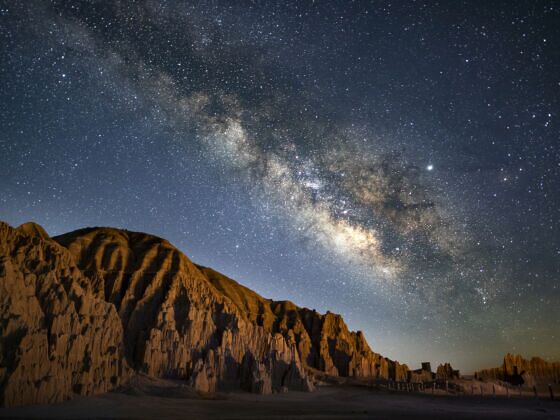The great thing about stargazing is you don’t have to be an expert to do it, and the pastime can be enjoyed year-round. All you have to do is find a dark sky destination, and look up.
Nevada is one of the best locations in the US for truly dark skies, and excellent stargazing. Home to several dark sky parks and sanctuaries, and vast swaths of desert with low light pollution, Nevada has all the ingredients for clear and awe-inspiring stargazing, so its no surprise that it has an abundance of dark sky-certified parks and sanctuaries, as well as special stargazing-themed experiences. The sunset, stars, and Champagne Train is perhaps the most unique stargazing offering in the state. Departing from the East Ely Depot, the train gives passengers an unrivaled night sky experience through the Steptoe Valley. From Ely, you’ll set out from the city in an open-air car, and as you leave the light pollution behind, you’ll see thousands of stars, constellations, planets, and galaxies–all visible to the naked eye. And the best part? They include a glass of Champagne in the ticket fare.



